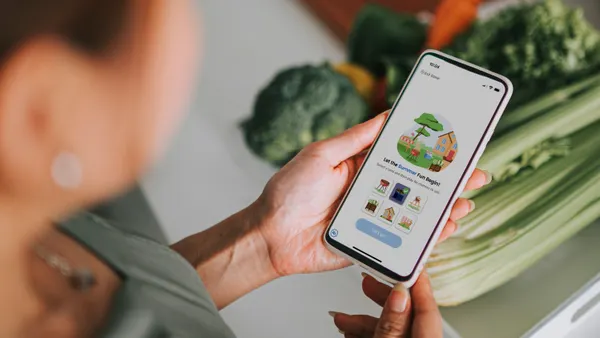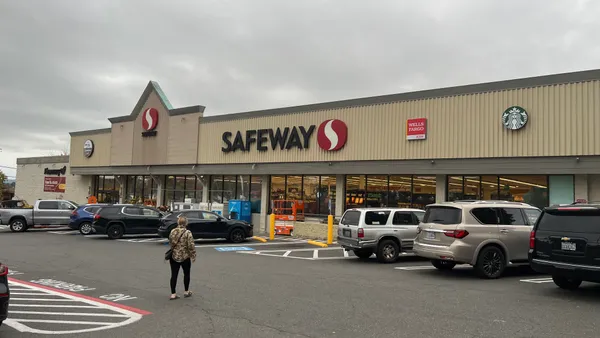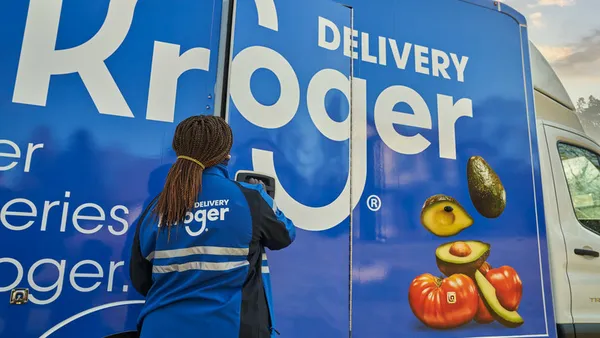Dive Brief:
- Online purchasing is not currently allowed with the Special Supplemental Nutrition Program for Women, Infants and Children (WIC), and a USDA task force says that needs to change quickly.
- In a recently published report, the WIC Task Force on Supplemental Foods Delivery provided a detailed overview of best practices for ordering, fulfillment, receipt of goods and post-pickup or delivery. The report also delves into suggested regulatory changes needed to pursue the e-commerce offering.
- The task force recommends that Congress authorize $75 million for WIC state agencies to develop and adapt the technology systems necessary for WIC online shopping by Oct. 1, 2025. “Effective implementation of online shopping options will require significant modification to State WIC Management Information Systems, processor systems, and retailer systems,” the report said.
Dive Insight:
WIC participants have been left out of the explosion of e-commerce offerings during the pandemic, and the task force's report outlines how that can change.
Convened in March, the task force consists of 18 member organizations, including retailers, manufacturers, representatives of WIC state and local agencies, WIC participants and technology companies. In exploring how to provide access to purchase WIC-approved products outside of physical stores, the task force offered suggestions including allowing split tender and mixed baskets, holding off on deducting benefits until the order has been fulfilled and letting shoppers see the balance of their benefits as they shop online.
The efforts to establish WIC online purchasing follow the USDA’s expansion of SNAP online purchasing, which started as a pilot several years ago and then significantly ramped up this year. Last November, the USDA announced the Nebraska-based Gretchen Swanson Center for Nutrition will develop a secure online ordering model for WIC with the aid of a $2.5 million grant from the Food and Nutrition Service.
While the task force noted that the "need for modern shopping options for WIC participants predates the pandemic," rolling out WIC online ordering has not been "immediately feasible" like it was for SNAP because of structural differences, administration, funding and transaction processing approaches.
Feeding America projected earlier this year that 42 million people, including 13 million children, are at risk of experiencing food insecurity in 2021. WIC provides federal grants to states for supplemental foods, health care referrals and nutrition education for low-income pregnant, breastfeeding and non-breastfeeding postpartum women and to kids up to five years old at nutritional risk.
The National Grocers Association is also pushing for online purchasing to become an option for WIC participants. The trade group published a blog post in April about several steps it wants Congress to take to make it easier for retailers, especially smaller grocers, to accept WIC benefits, noting that barriers include burdensome requirements for approval and the fact that some states have a slow vendor licensing process.
Modernizing WIC services also has high cross-party support, according to a poll of 2,052 likely voters in September by McLaughlin & Associates/ALG Research conducted on behalf of the National WIC Association and Alliance to End Hunger.
The USDA has indicated it plans to pursue rulemaking later this year to address regulatory barriers to online ordering and modernize relevant regulations.
In addition to the USDA, the grocery industry has been working to address food insecurity, from rolling out pickup lockers to close last-mile gaps to making online payments with SNAP benefits available. This summer, Google launched a free food support site that includes a Google Maps locator for finding the nearest food bank, food pantry or school lunch program pickup site, and a SNAP benefits search feature that provides information on national and state eligibility requirements.












